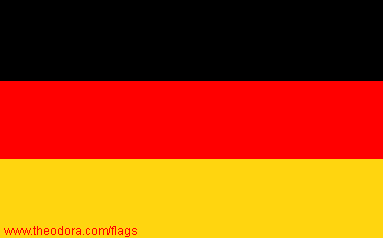 German Wines.
German Wines. 
 Wine Contents.
Wine Contents.
German wines are categorised by a fairly rigorous control system similar to that used in Austria. The classifications are as follows:
Tafelwein.
This is the lowest quality wine, and the majority is not exported. Extra sugar may be added before fermentation to boost the levels of alcohol if the label bears the letters QbA. If the label has QmP, then the wine has special attributes as well as a designated area of origin, and cannot have any extra sugar added. The latter QmP wines are subdivided into levels of ripeness and sweetness:
Kabinett and Spatlese. These grades of wine are usually light and dry. They are relatively unripe, and result in a wine that is crips and refreshing.
Auslese. This category of wine is a result of specially selected and particularly ripe grapes. The recent trend has been towards acidity regulation as opposed to sugar levels, and has reulsted in wines that are more consistent and easier to predict their character.
Beerenauslese and Trockenbeerenauslese. The grapes used to make this classification of wine are extremely well controlled and regulated. They are left on the vines until they are partially "raisined" and therefore dehydrated to intensify the flavour. Both of these categories are almost entirely dependent on the level of "rot" set in to the grapes.
 Wine Contents.
Wine Contents.
In addition to the above categories of wine, there is a variety of German wine known as Eiswein. This is particularly unusual, and basically limited to northern Europe where frost prevail earlier. The grapes are left on the vines until the first full frost of the autumn, upon which they are quickly harvested, and crushed after removing the ice crystals. The resulting wine is therefore much more concentrated, resulting in a crisp, acidic wine with great character.
This review of German wines is divided into the following wine producing regions; Ahr, Baden, Franken, Hessische Bergst, Mittelrhein, Mosel-Saar-Ruwer, Nahe, Pfalz, Rheinhessen, Saale-Unstrut, Sachsen, Wurttemberg. The northerly situation of Germany, compared to many other wine producing countries, means grapes take longer to ripen, and consequently stay on the vine for longer, usually well into November. However, this results in more aroma and flavour, and gives many German wines a characteristic fruity, refreshing and lively quality.
 Wine Contents.
Wine Contents.
Ahr.
This is a small producing area, just south of Bonn on the banks of the river Ahr. The predominant grapes are red, mainly Spatburgunder (Pinot Noir) and Portugieser. The resulting wines are light, but have a charming fruity character. Of the few white wines produced, the fresh Riesling is the commonest.
Baden.
Baden is situated in the far south of Germany, and the combination of a variety of soils and the extra sunshine contributes to a wide variety of grape varieties, including Muller-Thurgau, Rulander (Pinot Gris), Gutedel, Gewurztraminer, Riesling and Spatburgunder. The white wines are fresh, light and fragrant, with the Gewurztraminer also posessing a spicy quality. The predominant red, Spatburgunder, is full bodied and fiery.
Franken.
Wines from this region are often easily identified by the unusually shaped, squat green bottles called Bocksbeutel. The main grape varieties include Muller-Thurgau and Silvaner, giving earthy, robust but also full bodied wines.
Hessische Bergstrasse.
Wines from this region are almost entirely consumed locally, and are therfore scarce outside Germany. However, any that do escape are fragrant, rich whites with lower acidity than many other regions. The main grapes used are Riesling, Muller Thurgau and Silvaner.
Mittelrhein.
 Wine Contents.
Wine Contents.
Situated on the banks of the Rhine, south of Bonn, this region has soils of clay and slate, which result in acidic, lively wines. Again,the main grape is Riesling, followed by Muller-Thurgau and Kerner.
Mosel-Saar-Ruwer.
This region contains some of Germany's most famous vineyards. As a result of the slate and flint soils, the wines are generally pale coloured, light, acidy and fruity.
Nahe.
To the east of Mosel is the Nahe region, with sandy soils inb the north and slaty soils in the south. Both areas produce Muller-Thurgau, Riesling and Silvaner that are fragrant, fruity and full of flavour.
Pfalz.
This is the largest wine producing region in Germany. In the north, the clay soils result in exceptional Riesling wines, and milder, full bodied wines from Muller-Thurgau, Kerner and Silvaner. Towards the south, chalk soils give fresher, intense wines. In addition to white wines, the region is also known for smooth, fruity, expressive red wine made primarily from the Portugieser grape.
Rheingau.
Rheingau has been termed Riesling World - indeed, it was the first area to recognise the value of a particular type of rot in adding spicy fragrances, fruity and rich ripeness to the wines. A distinctive, full bodied red wine is also made here from the Spatburgunder grape.
Rheinhessen.
Another large producing area, a wide variety of grapes are planted here including Muller-Thurgau, Silvaner and an excellent Riesling. Red grapes are mostly represented by the Portugieser grape.
Saale-Unstrut.
A small northern area, a soft, dry white wine is made from Muller-Thurgau, Silvaner and Pinot blanc grapes.
Sachsen.
This is the most easterly region, and few wines are exported. Wines are produced from the Muller-Thurgau, Pinot blanc and Traminer grapes that are dry, fruity and full of character.
Wurttemberg.
In the vicinity of Stuttgart, it is the largest red wine producer in Germany. Grapes include the Trollinger, Mullerrebe, Pinot Noir, Portugieser and Lemberger varieties resulting in very fruity red wines.
 Wine Contents.
Wine Contents.
 Front Page.
Front Page.